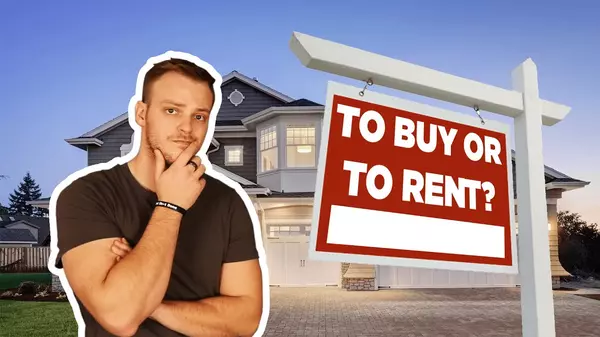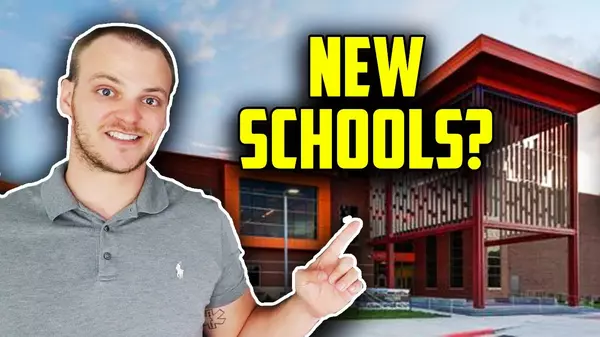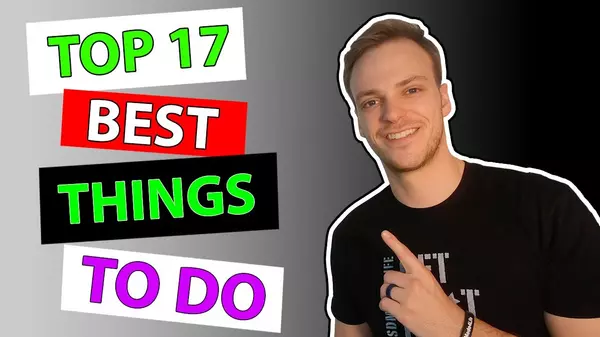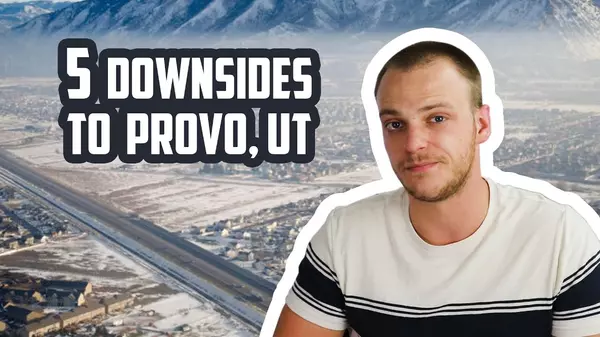Cost Of Living Salt Lake City Utah | Provo Utah | Park City | Wasatch Front
What's up, you guys? It's Cody Steck. Today we're discussing a little bit about the cost of living here in Salt Lake City, Utah. And along the Wasatch front, we're going to be covering everything from housing to transportation, utilities, food, insurance. We're going to cover it all here in this article.
So let's jump into it. If you don't already know, I'm a realtor here in the Salt Lake City area and along the Wasatch front (generally, the north and south region of Utah State) and I'm helping so many people relocate here from out of state and even internationally, and I absolutely love it. So if you're thinking about doing the same, make sure to get in touch with me. My information is down below this article.
You can call me, text me, send me an email, just get a hold of me in any way that you need to so we can have a discussion about what it's like to live here and what lifestyle and type of home are going to best fit your needs. All right, let's jump into it.
No. 1 - Housing Prices.
So let's start with the biggest one on the list and probably the biggest indicator of what the cost of living is here in the area. And that is going to be housing. It's the one that you guys care about most and that you want to know. So in Utah here, we do have a higher cost of housing than the national average. If you look at some recent reports, you'll see that the median home price in the United States is about $231,000, whereas here in Utah, we're sitting at about $338,000 for your median home cost.
A lot of the Southwest actually sees a lot of appreciation because even though there's a lot of lands, it's actually built into very small cities. And within the city itself, there's not a lot of lands left, which actually tends to drive the price of housing up. So even though it may be higher than the median price right now in the United States, you can expect over the next 10, 20, 30 years that the home prices are going to go up, and that's going to be wealth that you're building for your family. Now, when it comes to housing, if you're looking at Salt Lake City specifically, you're actually going to find that the median home price is quite a bit higher. We're actually closer to $392,000 here in Salt Lake City proper.
No. 2 - Rent.
All right, so let's talk a little bit about what it's like to rent here in the Salt Lake City area, it's actually lower than the national average. Let's say you're looking at renting a two-bedroom apartment, you're going to be close to about $1,000 a month, whereas the national average is about $1150, even $1,200 per month. Of course, as you go up in size, it does get a little bit more expensive, but it stays consistently under the average that you see here in the United States. Three bedrooms, you're looking at about 1300 per month. Four bedrooms are going to be about 1550 per month.
So it's actually not too bad, in my opinion. I think the prices are quite fair given how much job growth there is here, how low the unemployment rate is, and the average household income, which we're going to talk about here in just a minute.
No. 3 - Utilities.
The next thing that I want to talk about is utilities. Now, of course, utilities here in the state are going to vary based on the size of the home, how much you use it, how much you cool the home, or how much you heat it. It just depends.
But on average, you're going to see about two to $300 per month. And that includes everything that's going to be water, power, gas, garbage, sewer. It includes everything there. And of course, as I said, it can be lower, it can be higher. Utah does get very hot in the summer, so you may spend more cooling the house down.
And of course, it gets cold in the winter, so you have to heat the home up. So we do have extreme temperatures where it gets really cold or really hot. And so when you're counteracting that with either heat or cold, it can get a little bit more expensive here. We don't have the benefit of just having amazing weather year round like California does, but that's okay. It's actually kind of nice to have the swings in temperature because it gets a little bit colder and you can enjoy that, and then it gets hotter where you can go out, you can go swimming layout, and it feels great.
On average, our utilities are actually lower than you'll find on a national average, but you can expect anywhere from about $200 to $300 per month for your average-sized home and for your average family. You're going to find things like the Internet right above the national average. I spend about $65 a month on my Internet. Of course, you can get faster plans that are a little bit more. And you think you can even get one or two plans that are a little bit cheaper closer in that $50 to $60 Mark range.
No. 4 - Transportation.
All right, so let's talk a little bit about transportation. You do have the tracks line and frontrunner in addition to the local public busses, but those are going to be the main sources of public transportation. They are a great option, especially if you're traveling along the main corridor of i-15. You can use those to get to work very efficiently. You can get a monthly pass for about $100, depending on what service you need.
It just depends on what works for you. Now, let's say that you don't want to take that public transportation because of where you live or where you work. It's easier to just drive.
No. 5 - Gas Prices.
Let's talk about gas prices. Right now. You can get unleaded fuel, just your basic fuel. It's about two points $65 depending on where you go. If you're looking for diesel, it's going to be closer to about $3. Again, just depends on where you go and it may change in the future right?
No. 6 - Income Tax.
All right. So let's talk about the next thing that you're going to want to know. When it comes to the cost of living here in Salt Lake, let's talk a little bit about income tax.
Now, of course, nobody wants to pay taxes, but the thing that I like about Utah is they just have a flat tax rate of 4.95%. It doesn't vary based on how much you make. It's just that flat amount and that's it. So, of course, we can't compete with the States that don't have any income tax. But at 5%, it's really not too bad.
Now, if we look at the state sales tax rate here in Utah, it's actually right around that same market, 4.85%, which again, is really not too bad. Now, every state is going to have taxes. They're going to have some that are higher, some that are lower. Some states have no income tax, some have really high taxes on transportation. It just depends where you go.
In my opinion, Utah is really not that bad. And when you even it all out. I think that Utah is actually one of the best states to be in when it comes to taxes when you adjust for all of the other costs that you're going to have as part of your overall cost of living. All right. So let's talk a little bit about health care and what that's going to cost you.
No. 7 - Healthcare.
Now, of course, healthcare is such a complex issue, and there's so much that goes into it that it's hard to say what it will actually cost you. But you can find plans anywhere from $100 to $500 per month, depending on what kind of coverage and what deductible you want. An easier way to look at this is by determining how we compared it to the national average. Now, if you look at a cost of living index for healthcare, we're at 104.5, if 100 is the middle point of that index.
Cost of Living per areas.
Now let's jump over and compare a little bit to how this actually reflects when you look at other neighboring States like California, Oregon, and Washington, which of course, are going to be a lot more expensive. And even when you compare to Nevada, Arizona, and Idaho, which are some other popular States here surrounding Utah, that you might be considering, of course, anything in California is probably going to be a lot more expensive. The only exception to that may be utilities, just because they have such great weather, especially along the coast. When it comes to Oregon or Washington, of course, those are different markets, and it's hard to compare to those. But on average, they're going to be quite a bit more expensive, especially when it comes to things like taxes, transportation, and housing.
Looking at other States, Arizona, Nevada, Idaho, I'd say that they're all relatively close. They all have their pros and cons. They all have some things that are a little bit better and some things that are a little bit worse. But I think that the thing that Utah has going for it, and especially Salt Lake City and along the Wasatch front is that there's so much job growth and there's so much potential for the future that it's a great place to be. There are a lot of high-paying jobs here, and there are a lot of big corporate businesses coming in, especially in the tech and Internet space.
We've got Facebook, Amazon. We've got so many different tech companies in the Silicon slopes, which is what they're calling it. And there are a lot of high-paying jobs there that are really bolstering the growth here in Utah. The other thing that's important to note on this is that unemployment is actually below the national average. Recent job growth is actually above average.
And if you look at future job growth, it's even higher than the national average, which means that there's a really good potential for a lot of really good growth here. For those reasons, I think that moving to Salt Lake City is a very wise decision if you're looking to build some wealth and invest in real estate.
Looking at the cost of living from the website, BestPlaces.Net. They kind of have this cost of living map and how it compares to the US average. So they place the US average at 100 and then kind of compared it to the surrounding cities.
So Salt Lake City is kind of right in the middle. The downtown Salt Lake. We have the airport right there and the great Salt Lake with Antelope Island. So this would be kind of the Metro area
So you've got Salt Lake City. Immigration Canyon goes up the Canyon. There's not really much there. It's just a lot of homes. Right over to the east, will be a really expensive area.
As you get up into Park City, Snyderville, Summit Park, obviously that's a very exclusive part of town. So the cost of living is very expensive there. If we come back over to South Salt Lake, Magna, West Valley, and Taylorsville, these areas are relatively low on the scale. So your cost of living is going to be a little bit lower in those areas and a big part of this is because of the cost of housing.
Holladay does get a lot more expensive. That's where a lot of the nice upscale homes are at. It's very residential there. So that's most of what you'll find. You've got i-15 that kind of runs right down the middle of Salt Lake Area that kind of splits all of these east and west cities.
So you've got i-15 running and generally speaking, the North West Quadrant is going to be your cheaper area. West Jordan starts increasing a little bit. South Jordan, Riverton, Herriman, and Bluffdale start getting a little bit more expensive. And coming over here to Draper, which would be on the Southeast corner of the Salt Lake Valley, it does get a little bit more expensive.
So Sandy, Cottonwood Heights, the east side is a little bit more expensive overall. If we come down there, this is the other part that I want to point out. You've got Lehigh, Highland, and Alpine right here in this corridor from about Draper. The old prison is here in Draper. They're actually moving the prison from Draper here.
They're going to tear it down. They're building a new prison out here by the airport. So it's closer to downtown for court proceedings and stuff like that. So they're going to be tearing it down. It's going to be about a 600-acre development of new housing, new commercial, and just a bunch of office space.
So this main corridor is what they consider the Silicon slopes, basically everything from Provo, Orem, Linden, Pleasant Grove. This is American Fork right here. Lehigh, I would say is kind of the heart of it. And then up into Draper as that old prison site gets developed. So this is really going to be one of the areas that just increases like crazy over the coming years.
So looking at the housing map, on average, I think that Lehigh, American Fork, and Pleasant Grove are presently undervalued based on what they can actually deliver with what this is going to look like over the next 10, 15, or 20 years. So that could be a really great buy there. Looking over here in Saratoga Springs and Eagle mountain, this is a huge brand new area. There's a lot of land out there and a lot of new homes. So if you're willing to make a little bit of a commute, Whether you're going over here to Utah County Or up here to salt Lake County, this could be a great area that you might want to consider Where you can find housing that's a lot more affordable.
So overall. It looks relatively the same. Highland and Alpine, those are more expensive areas again, mostly due to housing. Lyndon is a little bit more expensive here as well, but Warren Provo, pleasant Grove, American fork and Lehigh, It's really not that bad if you're looking at those areas. I hope this was helpful for you guys.
Kind of getting an idea of where you might want to live and what the cost of housing is in those areas. All right, guys, so that about wraps up our article here on the cost of living for salt Lake City, Utah. I hope you enjoyed this content. If you did, please share this with a friend or family member who might be also interested in moving here to Utah.
I post new articles every Wednesday and I'd love to see you over there as well. And last but not least, get in touch with me if you're thinking about relocating here, I'd love to hear from you. My information is also listed down below. You can reach me anytime, call me, text me email, just get a hold of me so we can have a discussion about your move here until next time.
With all that being said, I'll catch you in the next one.
Cody Steck, Realtor
Real Broker, LLC
801- 244- 2297
Cody@fastutahhomes.com
Categories
Recent Posts










GET MORE INFORMATION

